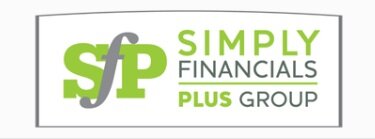It’s generally a good idea to keep overhead costs low so that your business profits will be higher. This is especially true with items that are easily commoditized and fairly standardized, such as utilities and rent. But there are times when increasing expenses pays off nicely, and here are five areas to consider so you can reap the rewards.
Training
Whether it’s for you or your staff, good training can pay back for years to come. Learning new skills, no matter what our crafts are, will keep our businesses from becoming stagnant. Implementing what we learn will help us grow.
You might get training to increase the mastery of your chosen profession. You might also want to consider general business skills, including technology, marketing, finance, and leadership. Just about everyone can benefit from learning more about project management, communications, and negotiations, to name a few more.
You might also want to consider “human performance” skills such as public speaking. Whatever you choose, training is always a great investment that pays back big dividends.
Tools
Without the right tools, the same task can take double the time. It’s a great idea to provide your employees with the most powerful computers and software on the market. The cost of labor outweighs the costs of the computers, so it makes sense to load employees up with the best tools you can. An employee with a slow computer, through no fault of their own, is not giving you their best, and that will cost money in lost productivity.
The same thing goes for owners. You can spend your time fighting with a machine or getting a ton of work done. I’m pretty sure the latter is more profitable.
Accounting
The most successful companies we work with invest in accounting services in five areas: accounting technology, accurate bookkeeping, thorough reporting, tax minimization, and professional consulting. When we see business owners cutting corners in any of these areas, it usually costs them more money in the long run to clean up the problems that result.
An up-to-date accounting system minimizes maintenance and troubleshooting costs. Making sure the bookkeeping and reconciliations are done properly is essential for compliance reporting and decision-making. A robust set of reports allows a business owner to make smart decisions about running their business, and minimizing taxes helps you keep more of what you make.
Since accountants see thousands of financial reports in their careers, they have developed an eye for opportunities that a business owner may not see. Bringing an outside perspective into your business is a good investment that can help you discover great opportunities in your business.
Marketing
Whatever you do in your business, you are helping others. You are sharing a skill you have that your clients either don’t have or don’t choose to do for themselves. Being a best-kept secret doesn’t help you share your gifts and talents.
Marketing can help you get the word out to people who need your services but might not know about you. Developing great marketing materials will help you communicate what you do as well as receive fair compensation for what you do. It almost always makes sense to invest in this area of your business.
Employee Perks and Benefits
Keeping employees passionate about your vision and motivated to be productive is a continuing task. One way to do that is to provide employee benefits and perks that make it attractive for employees to work for you.
There are many ways to invest in your employees. Good health insurance, personal time off, extra vacation time, education reimbursement, flex time, and working from home are just a few of the many options you can choose from to enhance employees’ working environments.
Measuring the Payoff
We can help you measure your return in any of these areas; as always, please let us know how we can help.
